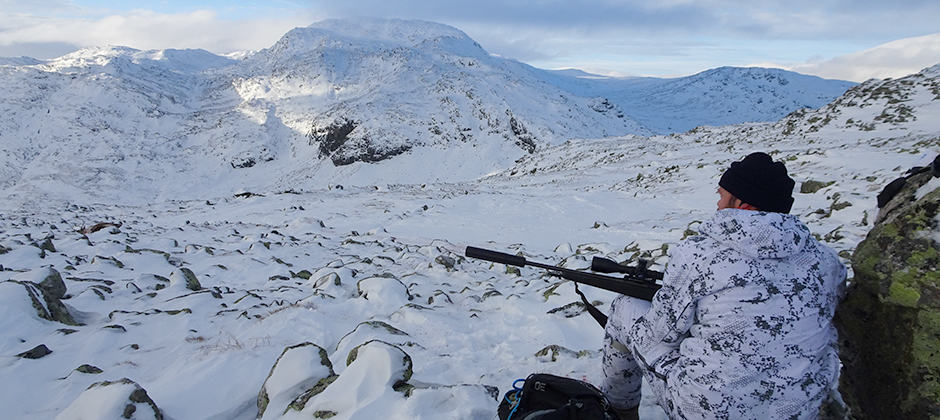Share this article
WSB: Marksmen outperform hunters eliminating infected herd
Chronic wasting disease has mostly affected North American wildlife, but when it appeared among reindeer in Norway in 2016, authorities took drastic action. Government officials ordered the eradication of the entire CWD-infected herd of 2,000 reindeer (Rangifer tarandus), using both hunters and professional sharpshooters.
“There appears to be no other alternative to fighting CWD,” said University of Oslo ecology professor Atle Mysterud.
Having seen the spread of the fatal prion disease among deer, elk and other cervids in North America, Norwegian authorities sought to avoid the “same sad development” in Europe, Mysterud said. Officials changed hunting restrictions, allowing some 1,000 recreational hunters a total quota of 3,500 reindeer. They also brought in 30 professional marksmen, using helicopters and snowmobiles, to cull the herd.
“The plan was for hunters to remove about 1,000 reindeer and the marksmen to take the rest,” Mysterud said.
But the marksmen proved far more effective than the hunters, Mysterud found. In a study published in the Wildlife Society Bulletin, he and his co-authors found recreational hunters took far fewer reindeer than the marksmen.
“Beforehand, I think most people would think hunters could do the job, given almost free quotas and longer time available. And we doubted the marksmen would be able to take out the rest,” Mysterud said.
The findings raise important questions as sharpshooters are increasingly being considered as a way to manage wildlife populations, from deer in urban parks to kangaroos in Australia to combating African swine fever in the Czech Republic.
“This is also a personal issue,” Mysterud said. “I have hunted in the CWD-infected population for a very long time and took part in the last hunt.”
He and his team analyzed the daily offtake by hunters and marksmen in the herd elimination effort. They found that hunters took 582 reindeer. That was only about 31% more than the previous year under normal regulations. The marksmen, on the other hand, culled 1,399 reindeer, with higher daily averages and maximums than hunters. Both were impacted by days of heavy fog.
“Marksmen were clearly more efficient,” Mysterud said.
They had a longer time frame and access to snowmobiles and helicopters, and since they didn’t take care of the meat, they had a shorter handling time, he said. Hunters were on the ground from Aug. 10 to Oct. 31, 2017. Marksmen were dispatched between Nov. 7, 2017 and Feb. 25, 2018.
“Modern hunters are clearly limited by time available, and by spatial access rights,” Mysterud said. “Often reindeer are gathered in areas where only a few hunters are allowed.”
As the popularity of recreational hunting wanes, the authors anticipate more use of marksmen to control wildlife, from reducing wildlife disease to thinning urban wildlife populations. Since the sharpshooters are trained in handling contaminated meat, they offer a safer alternative “from a disease containment perspective,” Mysterud said.
The authors called for caution in using marksmen, though, and more research into what conflicts they may cause with locals.
“Reindeer hunting is an important part of their cultural heritage,” he said. “Hunting is not simply a hobby.”
This article features research that was published in a TWS peer-reviewed journal. Individual online access to all TWS journal articles is a benefit of membership. Join TWS now to read the latest in wildlife research.
Header Image: In eliminating a reindeer herd affected with chronic wasting disease, marksmen proved more efficient than hunters. ©Statens naturoppsyn/Miljødirektoratet








